Torn MacAlester's Blog, page 11
March 23, 2023
Torn’s Science Fiction, Technology, & Science March 7–25, 2023
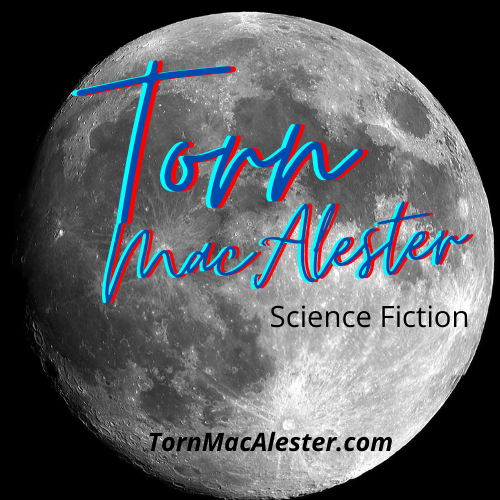 Featured Fusion
Featured FusionWhy is fusion so important?
There are many answers. One is that it enables many items from science fiction. Space exploration itself is revolutionized with many different schemes for fusion engines. The benefits are mainly about power. For fusion, there is a lot of it.
In science, one can look at a periodic table of elements. You will notice the masses of a Hydrogen is 1.00784 atomic mass units. The mass of Helium, the next heaviest element, is 4.002602 atomic mass units. Four Hydrogen atoms have a mass of 4.03136, a difference of 0.028754 atomic mass units. When fusing those 4 hydrogen into helium, that extra mass is turned into energy using Einstein’s famous formula  . For this case, 0.028754 amu = 4.774716716e-29 kg gives 4.29e-12 Joules of energy. This energy density is about 10 million times greater than coal.
. For this case, 0.028754 amu = 4.774716716e-29 kg gives 4.29e-12 Joules of energy. This energy density is about 10 million times greater than coal.
For space travel, the mass is your enemy. Fusion provides energy density far better than any other source. And it has the advantage of continuing to work at distances far from the Sun where solar power becomes useless. It can run electric drives or even fusion powered drives. Here are some interesting articles on fusion.
In science fiction, fusion is assumed to be the necessary energy source for a type I civilization on the Kardashev scale. It seems to be the logical progression of Earth advancing into a type I civilization is the advent of nuclear fusion as a power source. One could argue that even a type II civilization is enabled by nuclear fusion.
Here is a nice story from 60 minutes that was 60 years in the making.
Thank you for your patienceTorn’s Science Fiction, Technology, and Science publication rate was disrupted by events outside the author’s control.
This week’s discord chatWeek of Mar 19 2023 [19th at 1 PM EDT (6 PM GMT), 22nd at 9 PM EDT (23rd 2 AM GMT)]
TBD Torn’s Discord Server Currently Reading
The Space Environment: Implications for Spacecraft Design — Revised and Expanded Edition by Alan C. Tribble
Lunar Sourcebook: a Users Guide to the Moon edited by Grant H. Heiken, David T. Vaniman, and Bevan M. French
Recently Read
2001: A Space Odyssey by Arthur C. Clarke
Destination—Death by Wilber S. Peacock
The New Frontiers Series, Book One: The Ship by Jack L. Knapp
Thunder Moon Tussle Trailer Thunder Moon Tussle by Torn MacAlester available on Amazon.com
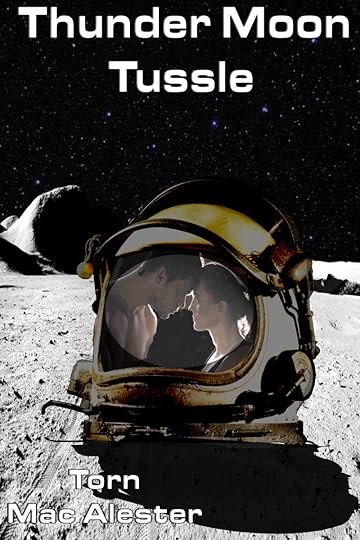 A new novel by Torn MacAlesterThe long awaited sequel to
Thunder Moon Tussle
:
Mask of the Joyful Moon
Coming SoonThis Week’s Short Fiction by Torn MacAlester
A new novel by Torn MacAlesterThe long awaited sequel to
Thunder Moon Tussle
:
Mask of the Joyful Moon
Coming SoonThis Week’s Short Fiction by Torn MacAlester This week I present the events in the vignette: The Mountain.
Science
Suppose that the Earth was tidally locked to the Sun. On the day side, the temperature races up and evaporates water. It becomes a hell that would be intolerable to life. On the night side, the opposite happens. The frozen darkness would also be intolerable. So what happens at the day/night terminator?
Here is an article from phys.org about tidally locked exoplanets and how some might have these rings of habitability.
The post Torn’s Science Fiction, Technology, & Science March 7–25, 2023 appeared first on Torn Macalester.
February 26, 2023
Torn’s Science Fiction, Technology, & Science 28 February — 6 March 2023

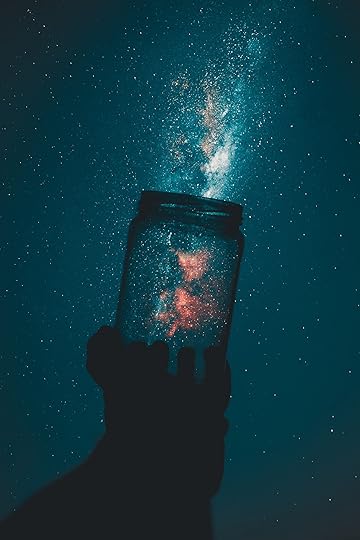 Featured The Drake Equation
Featured The Drake EquationThe Drake Equation is an equation that gives an estimate of the number of radio capable civilizations in the galaxy that could be detected using conventional radio astronomy techniques.
A good overview of the Drake Equation is provided by the Seti Institute.
I have written an article about the Drake Equation as part of my articles concerning World Building For Science Fiction.
In science fiction of the past, almost every planet had life and intelligent life. Since the space age, observational data has shown the other planets of our solar system are devoid of intelligent and maybe even life. High confidence of recent SETI searches place limits on the existence of ET. As a science fiction author, I’d like to keep within the limits of observations, or at the very least, know when I’m violating them.
Below is a video from Astrum that discusses how scary the solutions for the Drake Equation are scary, no matter what the answer.
This week’s discord chatWeek of Feb 26 2023 [26th at 1 PM EDT (6 PM GMT), 1 Mar at 9 PM EDT (2nd 2AM GMT)]
The Drake Equation Torn’s Discord Server Currently Reading
2001: A Space Odyssey by Arthur C. Clarke
The Space Environment: Implications for Spacecraft Design — Revised and Expanded Edition by Alan C. Tribble
Lunar Sourcebook: a Users Guide to the Moon edited by Grant H. Heiken, David T. Vaniman, and Bevan M. French
Recently Read
Destination—Death by Wilber S. Peacock
The New Frontiers Series, Book One: The Ship by Jack L. Knapp
Thunder Moon Tussle by Torn MacAlester available on Amazon.com
 Thunder Moon Tussle Trailer A new novel by Torn MacAlesterThe long awaited sequel to
Thunder Moon Tussle
:
Mask of the Joyful Moon
Coming SoonThis Week’s Short Fiction by Torn MacAlester
Thunder Moon Tussle Trailer A new novel by Torn MacAlesterThe long awaited sequel to
Thunder Moon Tussle
:
Mask of the Joyful Moon
Coming SoonThis Week’s Short Fiction by Torn MacAlester This week, I offer the vignette Sins of the Son.
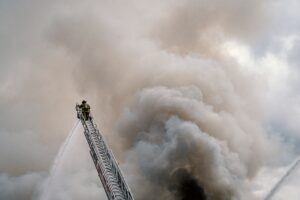
As we learn about the universe, seemingly paradoxical results are always refining our theories. In this case, our theories about gas giant formation such as Jupiter, are put to the test when we find a massive planet orbiting a small star.
Robert Lea has published the Massive ‘Forbidden Planet’ on Space.com
The post Torn’s Science Fiction, Technology, & Science 28 February — 6 March 2023 appeared first on Torn Macalester.
February 21, 2023
Torn’s Science Fiction, Technology, and Science 20–27 Feb 2023

 Featured
Featured Thunder Moon Tussle is a novel that would never have happened if I had followed my original plan. I was writing another novel and decided that I needed a backstory told. That backstory wasn’t expected to be very long. However, that was before I introduced Deputy Genevieve Miller.
Seldom does a character arrives that disrupts everything. Deputy Miler arrived and disrupted Nils Carmike according to plan. But that interaction became so intriguing that the storyline morphed. In fact, it morphed enough to require a substantial rewrite of the original novel to include Gen Miller as a major character.
As that original novel, I’m nearing its completion after rewriting it from scratch. Gen’s inclusion is a positive impact on the original story. I welcome the reader to take a sneak peak at Thunder Moon Tussle:
Also, it is available at amazon.com in both paperback and kindle: Thunder Moon Tussle by Torn MacAlester
Thunder Moon Tussle Trailer Thunder Moon Tussle by Torn MacAlester available on Amazon.com This week’s discord chat
This week’s discord chat Week of Feb 19 2023 [19th at 1 PM EDT (6 PM GMT), 22nd at 9 PM EDT (23rd 2AM GMT)]
Discussion about Thunder Moon Tussle by Torn MacAlester Torn’s Discord Server Currently Reading
2001: A Space Odyssey by Arthur C. Clarke
The Space Environment: Implications for Spacecraft Design — Revised and Expanded Edition by Alan C. Tribble
Lunar Sourcebook: a Users Guide to the Moon edited by Grant H. Heiken, David T. Vaniman, and Bevan M. French
Recently Read
Destination—Death by Wilber S. Peacock
The New Frontiers Series, Book One: The Ship by Jack L. Knapp
A new novel by Torn MacAlesterThe long awaited sequel to Thunder Moon Tussle : Mask of the Joyful Moon Coming SoonThis Week’s Short Fiction by Torn MacAlester
This week, I offer the vignette Stranger.
Evidence to Resolve Dark Energy Mystery
Dark matter and dark energy have been two fundamental problems in current physics.
Dark matter is the unseen matter that makes galaxies spin like DVDs rather than like whirl pools. The dark matter has to be there to make the visible matter (stars and nebula) move the way they do.
Dark energy is responsible for explaining the measurements of the universe’s expansion. If the universe motion was driven by gravity only, then all of the objects in the universe should be slowing down with time. The measurement indicates that the galaxies are speeding up as they move away from each other. Dark energy is postulated as the unknow energy source that explains the measurements of the universe’s expansion.
Now, Evidence suggests that black holes may be responsible for this dark energy. If true, this will account for 70% of the energy balance of the universe that is currently unknown.
First Evidence of Black Holes as the Source of Dark Energy
I give a special thanks to Luna Lunaria for making me aware of this article.
The post Torn’s Science Fiction, Technology, and Science 20–27 Feb 2023 appeared first on Torn Macalester.
February 11, 2023
Torn’s Science Fiction, Technology, & Science 12–19 February 2023

 Featured A new short vignette by Torn MacAlester:
Vulcani Cinis
Featured A new short vignette by Torn MacAlester:
Vulcani Cinis
Genny planted her face against the living room window, watching the snow fall. The sky grew darker as she marveled at the dark snow covering the grass.
“Can I make a snowman when it stops snowing, Mom?”
“Honey, come and sit by me,” said her mother as she was watching the television.
“Yeah.” Genny bounced down and took a seat next to her on the couch and looked at the enormous cloud on the TV. “What are you watching?”
“The news, Genny.”
“About the snowstorm?” Asked Genny, still confused about her mom’s behavior. Snow was common in this part of Pennsylvania. Even this warm winter still had a few nice storms. Unlike this one, they usually start with rain.
“It’s not a snowstorm.”
“What is it?”
“The lady on the TV is calling it a volcanic explosion,” said Mom.
“What’s that?”
“It’s when fire from deep inside the Earth causes a mountain to explode.”
“Oh.” Genny thought about it for a few minutes. “So, the snow is falling smoke?”
“It’s called ash, Genny. And you don’t have to say ‘so’.”
“Yeah. I keep forgetting.”
“It’s okay,” Mom said, hugging her tightly. “Dad will not come home tonight. They have closed the highway.”
“Awe… but-”
“Don’t fuss.”
“I’m sorry, but weren’t we going to play ‘go fish’ tonight?” Genny asked.
“Yes. We’ll play together.”
Genny listened to the news, trying to make sense of it.
So far, there is no word from the FAA, but there are at least forty aircraft unaccounted for or missing. Most of these are small aircraft, but there are two passenger planes from Washington Airways that are still missing. According to the Airline, one was a plane bound for Helena that was near the park’s northern boundary when the explosion occurred. Another had just taken off from Bozeman. Neither plane has reported. But the airline points out that they have yet to reach any of the airports in Montana. Back to you, Erica.
Thank you, Tia, one last question. Did the airline say whether these planes went down during the initial eruption, or did the plane go down later?
The–
“Genny?”
“Yeah, Mom?”
“Go get the pack of cards.”
“Okay,” Genny ran upstairs to the game-room. And opened the closet, looking for the playing cards. She found the ‘Old Maid’ deck, but pushed it aside to find the regular cards.
“Genny?” she heard Mom yell from downstairs.
Genny ran to the stairs and yelled back, “Yeah?”
“Your Uncle Jay just called. He’s stopping by tonight.”
“Yay!” Genny cheered. Uncle Jay was fun.
“Bring the cards.”
“How is she?” Genny woke hearing Uncle Jay’s voice.
“I think she is scared,” Mom said. “I know she didn’t understand everything about the eruption, but I tried to keep her occupied when the worst news was reported.”
“Uncle Jay,” Genny said, climbing out of the couch.
“Hay little sweety.” Jay stepped away from the doorway. Genny noticed the flakes of ash falling from his coat. She reached for it, thinking it was cold. The flake disintegrated into dust in her hand as she felt the warm sting. She rubbed her hands on her jeans. Jay stepped back, taking his coat off and setting it by the door.
Mom went to the kitchen, bringing back a broom and dustpan. Mom swept as Jay stomped his feet, getting rid of the flakes from his trouser legs and shoes.
“That should do it,” he said.
“Yes,” Mom agreed.
“That’s not snow.” Genny observed.
“That’s correct, Genny,” Jay said. “Do you know what we call it?”
“Yes,” Genny said. “I learned today that it’s called ash.”
“You learn that in school?” Asked Jay.
“No,” Genny responded, grinning. “Mom told me.”
“Well, that’s wonderful.” He answered.
“So,” Genny put her hand over her mouth. “Oops—Sorry, Mom. I didn’t mean to say ‘so’. Dad is not coming home tonight. Did you come to play ‘go fish’, Uncle Jay?”
“Yes,” he said. “We can play. Give me a few minutes to visit with you and your mom.”
“Nel, I came over to check on you, since Phil could not make it back from New York.”
“It’s fine. Phil called from the hotel this afternoon. They canceled his flight, and he couldn’t get a rental car.”
“Well then, I must share the good news with just you two. My brother will just have to hear it later.”
“Jay, what is it?” asked Mom.
“The Bureau called today. I need to report to Quantico the day after tomorrow for orientation.”
“That is wonderful,” Mom said.
“Yay!” said Genny. “So, that means you will be Agent Jay?”
“It’s likely to be Agent Miller,” said Jay. “But yes.”
This week’s discord chat
Week of Feb 12 2023 [12th at 1 PM EDT (6 PM GMT), 15th at 9 PM EDT (16th 2AM GMT)]
Open Forum Torn’s Discord Server Currently Reading
2001: A Space Odyssey by Arthur C. Clarke
The Space Environment: Implications for Spacecraft Design — Revised and Expanded Edition by Alan C. Tribble
Lunar Sourcebook: a Users Guide to the Moon edited by Grant H. Heiken, David T. Vaniman, and Bevan M. French
Recently Read
Destination—Death by Wilber S. Peacock
The New Frontiers Series, Book One: The Ship by Jack L. Knapp
A new novel by Torn MacAlesterThe long awaited sequel to Thunder Moon Tussle : Mask of the Joyful Moon Coming SoonThunder Moon Tussle Trailer Thunder Moon Tussle by Torn MacAlester available on Amazon.com
 This Week’s Short Fiction by Torn MacAlester
This Week’s Short Fiction by Torn MacAlester This week, I offer the vignette Fifteen Percent!
Artificial Life
Twelve years ago, a major scientific breakthrough was made by the creating the first artificial life.
Here is a video by Anton updating the results of the major study: Artificial Life Synthia.
Even though this research is in its infancy, the very possibility opens up lots of science fiction possibilities. Given that a human body is already a host to a multitude of symbiotic bacteria, imagine if additional bacteria could be programmed for enhanced benefits for our bodies.
The post Torn’s Science Fiction, Technology, & Science 12–19 February 2023 appeared first on Torn Macalester.
February 6, 2023
Torn’s Science Fiction, Technology, and Science 5 — 11 February 2023

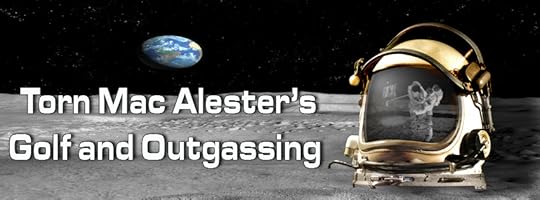 Featured Golf and Outgassing by Torn MacAlester
Featured Golf and Outgassing by Torn MacAlesterA few years ago, I began thinking about the return to the Moon in a fictional setting. Most of what I wanted was a sense of realism. Part of that realism centered around a couple unresolved issues from the past. In particular, I thought about finding a way to connect my stories to the Apollo Moon landings.
After some searching, I discovered a few interesting mysteries that were left over from the Apollo era. Some were focused on the expectation of igneous rocks that failed to materialize during the Apollo 16 landing. Prior to the mission science suggested that the lunar highlands were volcanic. However, the rocks found at Apollo 16 were breccias — complex shocked rocks that are the result of meteor bombardment. However, that mystery was more because of an expectation based on theory rather than from an unresolved sampling issue. Once the theory was updated, the existence of breccias was easily explained.
Another interesting mystery was the location of the Apollo 11 landing. At the time, Neil Armstrong did not see the expected landing zone once the lunar module (LM) had tipped to an upright orientation. He also noticed that they were about to land too close to a large crater and boulder field. Taking manual control of the spacecraft, Neil piloted the LM to a clear landing as ‘Buzz’ Aldrin relayed information of velocity and remaining fuel. They were successful, and Apollo 11 landed. But the location of the landing remained a mystery until the lunar reconnaissance orbiter (LRO) imaged the landing site.
A persistent mystery that remained until the time I began writing Golf and Outgassing was a water detection from part of the Apollo Landing Science Experiment Package (ALSEP) experiments. That detection showed up twice in the data. However, the prevailing scientific consensus at the time was that the Moon was dry. I wrote a short article about Apollo 14 in 2022. But, this mystery always intrigued me and it led to writing the short story Golf and Outgassing. I also wrote an accompanying article Science of Golf and Outgassing.
This week’s discord chat
Week of Feb 5 2023 [5th at 1 PM EDT (6 PM GMT), 8th at 9 PM EDT (9th 2AM GMT)]
Discussion of Torn’s Golf and Outgassing Torn’s Discord Server Currently Reading
2001: A Space Odyssey by Arthur C. Clarke
The Space Environment: Implications for Spacecraft Design — Revised and Expanded Edition by Alan C. Tribble
Lunar Sourcebook: a Users Guide to the Moon edited by Grant H. Heiken, David T. Vaniman, and Bevan M. French
A new novel by Torn MacAlesterThe long awaited sequel to Thunder Moon Tussle : Mask of the Joyful Moon Coming SoonThunder Moon Tussle Trailer Thunder Moon Tussle by Torn MacAlester available on Amazon.com This Week’s Short Fiction by Torn MacAlester
This Week’s Short Fiction by Torn MacAlester This week, I offer the vignette Rejection.
Extrasolar Planets
When I first started studying Astronomy, my book brought me up the state of knowledge about 1940. However, I also was very aware of the space program that was rewriting those books. Mars was discovered to have craters. Venus was an oven the melted lead. And, astronauts walked on the Moon.
We always had suspicion of planets orbiting other stars, but we were left to science fiction to image those. Now through advanced optics and big new observatories, extrasolar planets have become a reality of science. Some have been imaged, but now we have a video of planets circling another star:
Video of planets circling another star
By studying meteorites, we can estimate the constituent parts of Terrestrial planets. In Paul Voosen’s article from Science Weekly, we find that water and other volatiles are present. Since meteorites are the building blocks of planets, it suggests that Earth like planets can form around other stars.
Here is another example of a close orbiting ‘Earth like’ exoplanet in a video from Dr. Becky Smethurst.
Dust grains are the formation of planets. Here is an effort to understand those grains:
https://www.sciencedaily.com/releases/2023/01/230113145324.htm
For more references and videos see my page: Extrasolar Planets.
The post Torn’s Science Fiction, Technology, and Science 5 — 11 February 2023 appeared first on Torn Macalester.
January 29, 2023
Torn’s Science Fiction, Technology, and Science 29 January — 4 February 2023

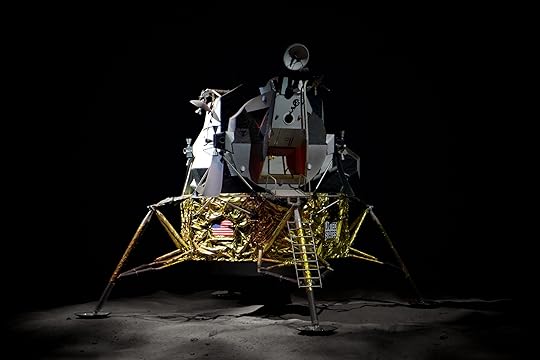 Featured Apollo 14
Featured Apollo 14Apollo 14 is the 8th crewed Apollo mission and the 3 landing. The mission landed at the Fra Mauro Highlands. The mission lasted 9 days and represented the first mission after Apollo 13 accident that scrubbed the landing.
I wrote a short article about Apollo 14 in 2022.
The landing site for Apollo 14 is central in my short story Golf and Outgassing, a story about a return mission to the Moon. This landing becomes an important consideration in my upcoming novel Mask of the Joyful Moon.
This week’s discord chat
Week of Jan 29 2023 [29th at 1 PM EDT (6 PM GMT), Feb 1st at 9 PM EDT (2nd 2AM GMT)]
Apollo 14Torn’s Discord Server Currently Reading
2001: A Space Odyssey by Arthur C. Clarke
The Space Environment: Implications for Spacecraft Design — Revised and Expanded Edition by Alan C. Tribble
Lunar Sourcebook: a Users Guide to the Moon edited by Grant H. Heiken, David T. Vaniman, and Bevan M. French
A new novel by Torn MacAlesterThe long awaited sequel to Thunder Moon Tussle : Mask of the Joyful Moon Coming SoonThunder Moon Tussle Trailer Thunder Moon Tussle by Torn MacAlester available on Amazon.com This Week’s Short Fiction by Torn MacAlester
This Week’s Short Fiction by Torn MacAlester This week, I offer the vignette Clash of Titans.
Extrasolar Planets
By studying meteorites, we can estimate the constituent parts of Terrestrial planets. In Paul Voosen’s article from Science Weekly, we find that water and other volatiles are present. Since meteorites are the building blocks of planets, it suggests that Earth like planets can form around other stars.
Extrasolar Planets
Here is another example of a close orbiting ‘Earth like’ exoplanet in a video from Dr. Becky Smethurst.
Extrasolar Planets
Dust grains are the formation of planets. Here is an effort to understand those grains:
https://www.sciencedaily.com/releases/2023/01/230113145324.htm
For more references and videos see my page: Extrasolar Planets.
The post Torn’s Science Fiction, Technology, and Science 29 January — 4 February 2023 appeared first on Torn Macalester.
January 22, 2023
Torn’s Science Fiction, Technology, and Science: This Week 22–28 January 2023

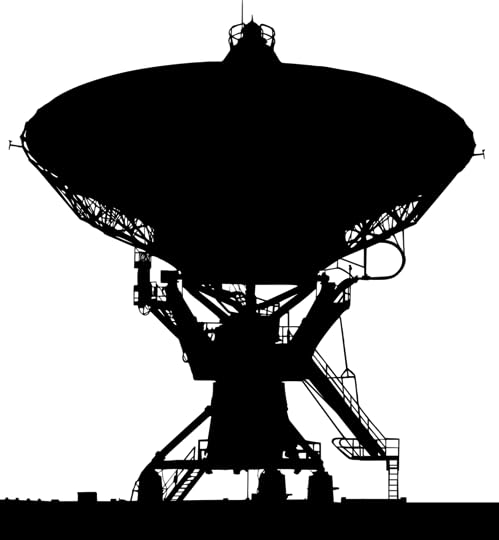 Gordon Johnson from Pixabay" alt loading="lazy" class="so-widget-image"> Featured
Gordon Johnson from Pixabay" alt loading="lazy" class="so-widget-image"> Featured The Fermi Paradox
A few weeks ago, I began a discussion about the Kardashev scale. The Kardashev scale builds levels of technology that represent advanced civilizations, mostly beyond our own. Given the technology scale, and speculation from science fiction, we can scale possible galaxy crossing times.
The galaxy crossing times can also be connected to a civilization’s colonization time for the galaxy. Once we get those numbers, it becomes apparent that the colonization time is small compared to the age of the universe. Enrico Fermi noticed that the galaxy crossing time is small compared to the relative age of the universe. Hence the paradox. We should be in contact with aliens, but we aren’t. There’s more to the paradox, but at the most general — this is it.
In my article on the subject, It Starts With A Paradox, I discuss this in more depth.
Elizabeth Howell wrote an extensive article Is anybody out there? for space.com in December of 2021, that I highly recommend.
Another good article appears recently in Big Think, Where is Everybody? A new hope for solving the Fermi Paradox. It discusses the Square Kilometer Array (SKA) radio telescope, that may provide us a useful tool in answering this interesting science question.
Finally, this week. I’d like to leave my readers with an interesting question: In science fiction where faster than light (FTL) travel is the norm, what is the most plausible means of discovery of other FTL capable civilizations?
This week’s discord chat
Week of Jan 22 2023 [22nd at 1 PM EDT (6 PM GMT), 25th at 9 PM EDT (26th 2AM GMT)]
The Fermi Paradox Torn’s Discord Server Currently ReadingThe New Frontiers Series, Book One: The Ship by Jack L. Knapp
2001: A Space Odyssey by Arthur C. Clarke
The Space Environment: Implications for Spacecraft Design — Revised and Expanded Edition by Alan C. Tribble
Lunar Sourcebook: a Users Guide to the Moon edited by Grant H. Heiken, David T. Vaniman, and Bevan M. French
Thunder Moon Tussle Trailer Thunder Moon Tussle by Torn MacAlester available on Amazon.com This Week’s Short Fiction by Torn MacAlester
This Week’s Short Fiction by Torn MacAlester This week, I offer the vignette Commander.
Fusion
Here is a surprise. When would you expect that Fusion and JP Morgan to appear in the same sentence?
Fusion energy pioneer Tokamak hires JP Morgan for huge fundraising
FusionFor more references and videos see my page: Fusion
Extrasolar Planets
Here is another example of a close orbiting ‘Earth like’ exoplanet in a video from Dr. Becky Smethurst.
Extrasolar Planets
Dust grains are the formation of planets. Here is an effort to understand those grains:
https://www.sciencedaily.com/releases/2023/01/230113145324.htm
For more references and videos see my page: Extrasolar Planets.
A new novel by Torn MacAlesterThe long awaited sequel to Thunder Moon Tussle : Mask of the Joyful Moon Coming SoonThe post Torn’s Science Fiction, Technology, and Science: This Week 22–28 January 2023 appeared first on Torn Macalester.
January 15, 2023
Torn’s Science Fiction, Technology, and Science: This Week 15–21 January 2023

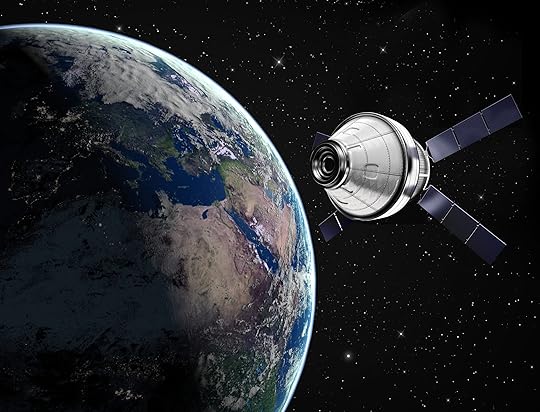 Featured
Featured 2001: A Space Odyssey by Arthur C. Clarke
It’s been 22 years since 2001. The world in the novel and film has not quiet been realized, but I thought it might be interesting to look at Clarke’s novel and film by Stanley Kubrick to see what has been realized. In context, the novel and the film date from 1968. That was before the Apollo Moon landings.
Obviously, several things in the novel are inaccurate. First, the ISS at the time of the film was far cry from the double pinwheel of the space station. Next, the end of Moon missions after Apollo 17 made it impossible for there to be a Moon base by 2001 (or 2023 for that matter). The reusable space plane could be considered as possible because some of the shuttle follow on vehicles designed in the 90’s, but none ever flew due to competing budgets. A crewed mission to Jupiter (or Saturn as in the novel) is even out of our reach today. Lastly, HAL 9000 was not realized in 2001. Many suggest such a machine might be available today, but the science does seem a few years off yet.
The movie 2001 has a special place in my memory. I was barely old enough in 1968 to see it on the big screen. It was at the 1000 seat movie theater that I saw Star Wars at years later. The movie was stunning. I loved the music and remember the huge space station spinning on the screen to the Blue Danube waltz. Within a couple of years, I was attempting to read the book. 2001 also fascinated me because I realized that I would see the 21st century and live in a time of wonder.
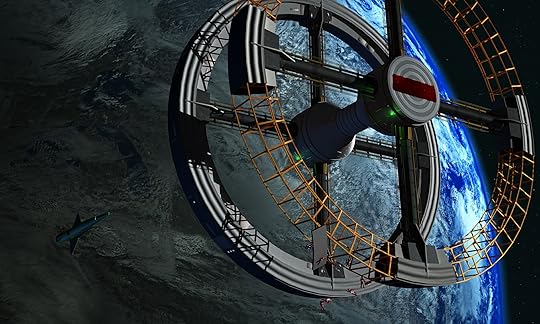 This week’s discord chat
This week’s discord chat Week of Jan 15 2023 [15th at 1 PM EDT (6 PM GMT), 18th at 9 PM EDT (19th 2AM GMT)]
2001 A Space Odyssey : A discussion of Arthur Clarke’s classic Torn’s Discord Server Currently ReadingThe New Frontiers Series, Book One: The Ship by Jack L. Knapp
2001: A Space Odyssey by Arthur C. Clarke
The Space Environment: Implications for Spacecraft Design — Revised and Expanded Edition by Alan C. Tribble
Lunar Sourcebook: a Users Guide to the Moon edited by Grant H. Heiken, David T. Vaniman, and Bevan M. French
Thunder Moon Tussle Trailer Thunder Moon Tussle by Torn MacAlester available on Amazon.com This Week’s Short Fiction by Torn MacAlester
This Week’s Short Fiction by Torn MacAlester This week, I offer the vignette Y+1
Fusion
For more references and videos see my page: Fusion
Extrasolar Planets
Dust grains are the formation of planets. Here is an effort to understand those grains:
https://www.sciencedaily.com/releases/2023/01/230113145324.htm
For more references and videos see my page: Extrasolar Planets.
A new novel by Torn MacAlesterThe long awaited sequel to Thunder Moon Tussle : Mask of the Joyful Moon Coming SoonThe post Torn’s Science Fiction, Technology, and Science: This Week 15–21 January 2023 appeared first on Torn Macalester.
January 8, 2023
This Week 8–14 January 2023

 Featured
Featured Morgan’s Road by Torn MacAlester
Morgan’s Road is a short story that I wrote a few years ago. It is not the first thing I ever wrote, but it is the first story that I decided to share with a broader audience. It is a fictionalized account of the discovery of water ice on the Moon. I imagined it as a tall tale that could be told around a camp-fire or in a typical tavern.
Check out the Morgan’s Road story here.
As part of my process of writing science fiction, I attempt to understand the science and technology behind the story. In fact, I have a science and technology element behind all my stories. Though I’ve pointed out that Morgan’s Road is about another element that is equally fascinating. You can read about it here.
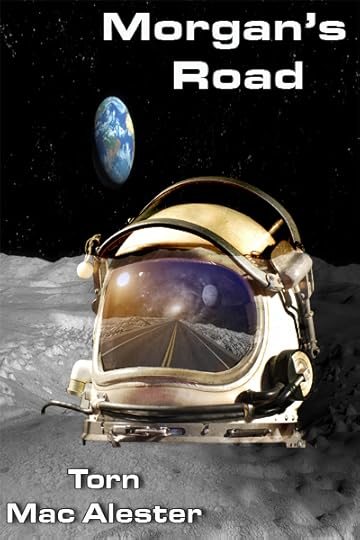 This week’s discord chat
This week’s discord chat Week of Jan 8 2023 [8th at 1 PM EDT (6 PM GMT), 11th at 9 PM EDT (12th 2AM GMT)]
Torn discusses his short story Morgan’s Road Torn’s Discord Server Currently ReadingThe New Frontiers Series, Book One: The Ship by Jack L. Knapp
2001: A Space Odyssey by Arthur C. Clarke
The Space Environment: Implications for Spacecraft Design — Revised and Expanded Edition by Alan C. Tribble
Lunar Sourcebook: a Users Guide to the Moon edited by Grant H. Heiken, David T. Vaniman, and Bevan M. French
Thunder Moon Tussle Trailer Thunder Moon Tussle by Torn MacAlester available on Amazon.com This Week’s Short Fiction by Torn MacAlester
This Week’s Short Fiction by Torn MacAlester This week, I offer a glimpse of a major character in Sins of the Son.

A new novel by Torn MacAlesterThe long awaited sequel to Thunder Moon Tussle : Mask of the Joyful Moon Coming SoonAcquisition of Technology
NASA’s (Double Asteroid Redirection Test) DART Mission is a demonstration of acquisition of technology necessary to ensure the survival of humanity. Last year, the successful kinetic intercept of an asteroid showed the feasibility of planetary defense.
You can read more about DART at the NASA press release:
DART is a clever use of a double asteroid to measure the effect of the collision. A double asteroid is an asteroid that is orbited by a lower companion. Because the asteroids have such tiny mass, an impact on the smaller companion would affect its orbit the other in a noticeable way that is detectable over a shorter time scale. The orbits of the asteroids around each other over a short timescale, so a difference in that orbit will be easier to observe than an orbit that has been changed around the sun.
In the video below, Anton Petrov, discusses a new result explaining the unexpectedly large orbit change that has been detected.
The Kardashev Scalehttps://futurism.com/the-kardashev-scale-type-i-ii-iii-iv-v-civilization
The Kardashev scale is a means of conveniently measuring the power output of a civilization. The scale traditionally has three levels, called I — planetary, II — stellar , & III — galactic.
A Type I civilization has a power output of approximately  Watts. This is a factor of ten thousand times greater than the Earth civilization’s current power output of
Watts. This is a factor of ten thousand times greater than the Earth civilization’s current power output of  Watts.
Watts.
The recent breakthrough with fusion power may put our civilization on track for becoming Type I sooner than without it. Check out my article on the Kardashev scale here.
Below, Michio Kaku comments on the the Kardashev scale and our trajectory to reach Type I within about a century.
Lunar Resources
https://www.herox.com/blog/954-what-resources-could-we-find-on-the-moon-here-are
Its not so outrageous as it seemed at first glance. The Moon has water in unusual places.
https://www.sciencealert.com/water-from-the-sun-has-been-found-on-the-moon
The solar wind is composed of mostly hydrogen. The rate of solar wind flow is  . That is the same as
. That is the same as  protons per second streaming away from the sun in all directions, or
protons per second streaming away from the sun in all directions, or  protons impacting the Moon’s surface per second.
protons impacting the Moon’s surface per second.
Many lunar rocks are oxides, providing the source of oxygen. If every proton impacting the Moon’s surface turns into water molecules, then we have on order  molecules or 200 grams of water being formed every second just below the Moon’s sunlit surface.
molecules or 200 grams of water being formed every second just below the Moon’s sunlit surface.
This water would be formed inside the rocks and regolith with a depth depending upon the incident energy of the protons.
Realistic Large Scale Space ConstructionInteresting web page with large scale space structures and current technology readiness level (TRL) estimates:
https://www.factoriesinspace.com/large-space-structures
To date, the largest structure built in space is the International Space Station (ISS). ISS took over a decade to build and required over a decade to assemble.
https://en.wikipedia.org/wiki/International_Space_Station
https://www.nasa.gov/mission_pages/station/main/index.html
The follow-on space stations that are expected to be built in the coming decade are all smaller but are expected to be commercial outposts.
https://www.space.com/nasa-commercial-space-station-rely-on-market-demand
But the really big space stations that could have there own spin gravity remain on the far horizon. Two examples are the Stanford Torus Space Settlement, and the O’Neill Cylinder.
Space Cities Out of Asteroids and Graphene Bags? Intriguing O’Neill Cylinder Study
VolcanosKilauea resumes eruption
Recently, both Volcanos on Hawaii’s big island stopped erupting.
https://www.nytimes.com/2022/12/13/science/mauna-loa-volcano-eruption.html
The Hunga-Tonga volcanic eruption of last January continues to provide a wealth of new science. Volcanos continue to surprise us. And this eruption is no exception. In the article below, the authors explain how the eruption effected Earth’s ionosphere more than many solar storms.
Fusion
Articles about Fusion:
https://www.science.org/content/article/historic-explosion-long-sought-fusion-breakthrough
https://www.livescience.com/23394-fusion.html
Fusion for Rockets:
http://www.projectrho.com/public_html/rocket/fusionfuel.php
Extrasolar Planets
Dying planet
https://www.sciencedaily.com/releases/2022/12/221219094937.htm
Database of Extrasolar Planets:
Methods for finding exoplanets:
https://www.planetary.org/worlds/exoplanets
This helps determine the fraction of stars having planets and the number of planets per star for the Drake Equation.
Using spectra to determine composition and chemistry of atmosphere:
https://www.pnas.org/doi/10.1073/pnas.1304208111
This relates to fraction of worlds having life from the Drake Equation.
The post This Week 8–14 January 2023 appeared first on Torn Macalester.
January 1, 2023
This Week 1–6 January 2023
 Feature The Kardashev Scale
Feature The Kardashev ScaleThe Kardashev scale is a means of conveniently measuring the power output of a civilization. The scale traditionally has three levels, called I — planetary, II — stellar , & III — galactic.
A Type I civilization has a power output of approximately  Watts. This is a factor of ten thousand times greater than the Earth civilization’s current power output of
Watts. This is a factor of ten thousand times greater than the Earth civilization’s current power output of  Watts.
Watts.
The recent breakthrough with fusion power may put our civilization on track for becoming Type I sooner than without it. Check out my article on the Kardashev scale here.
Below, Michio Kaku comments on the the Kardashev scale and our trajectory to reach Type I within about a century.
 This week’s discord chat
This week’s discord chat Week of Jan 1 2023 [1st at 1 PM EDT (6 PM GMT), 4th at 9 PM EDT (5th 2AM GMT)]
The Kardashev Scale Torn’s Discord Server Thunder Moon Tussle Trailer Thunder Moon Tussle by Torn MacAlester available on Amazon.com This Week’s Short Fiction by Torn MacAlester
This Week’s Short Fiction by Torn MacAlester This week, I offer a glimpse of a volcanic winter setting in: The Mountain

Its not so outrageous as it seemed at first glance. The Moon has water in unusual places.
https://www.sciencealert.com/water-from-the-sun-has-been-found-on-the-moon
The solar wind is composed of mostly hydrogen. The rate of solar wind flow is  . That is the same as
. That is the same as  protons per second streaming away from the sun in all directions, or
protons per second streaming away from the sun in all directions, or  protons impacting the Moon’s surface per second.
protons impacting the Moon’s surface per second.
Many lunar rocks are oxides, providing the source of oxygen. If every proton impacting the Moon’s surface turns into water molecules, then we have on order  molecules or 200 grams of water being formed every second just below the Moon’s sunlit surface.
molecules or 200 grams of water being formed every second just below the Moon’s sunlit surface.
This water would be formed inside the rocks and regolith with a depth depending upon the incident energy of the protons.
Realistic Large Scale Space ConstructionInteresting web page with large scale space structures and current technology readiness level (TRL) estimates:
https://www.factoriesinspace.com/large-space-structures
To date, the largest structure built in space is the International Space Station (ISS). ISS took over a decade to build and required over a decade to assemble.
https://en.wikipedia.org/wiki/International_Space_Station
https://www.nasa.gov/mission_pages/station/main/index.html
The follow-on space stations that are expected to be built in the coming decade are all smaller but are expected to be commercial outposts.
https://www.space.com/nasa-commercial-space-station-rely-on-market-demand
But the really big space stations that could have there own spin gravity remain on the far horizon. Two examples are the Stanford Torus Space Settlement, and the O’Neill Cylinder.
Space Cities Out of Asteroids and Graphene Bags? Intriguing O’Neill Cylinder Study
VolcanosRecently, both Volcanos on Hawaii’s big island stopped erupting.
https://www.nytimes.com/2022/12/13/science/mauna-loa-volcano-eruption.html
The Hunga-Tonga volcanic eruption of last January continues to provide a wealth of new science. Volcanos continue to surprise us. And this eruption is no exception. In the article below, the authors explain how the eruption effected Earth’s ionosphere more than many solar storms.
Fusion
Articles about Fusion:
https://www.science.org/content/article/historic-explosion-long-sought-fusion-breakthrough
https://www.livescience.com/23394-fusion.html
Fusion for Rockets:
http://www.projectrho.com/public_html/rocket/fusionfuel.php
Extrasolar Planets
Database of Extrasolar Planets:
Methods for finding exoplanets:
https://www.planetary.org/worlds/exoplanets
This helps determine the fraction of stars having planets and the number of planets per star for the Drake Equation.
Using spectra to determine composition and chemistry of atmosphere:
https://www.pnas.org/doi/10.1073/pnas.1304208111
This relates to fraction of worlds having life from the Drake Equation.
The post This Week 1–6 January 2023 appeared first on Torn Macalester.



